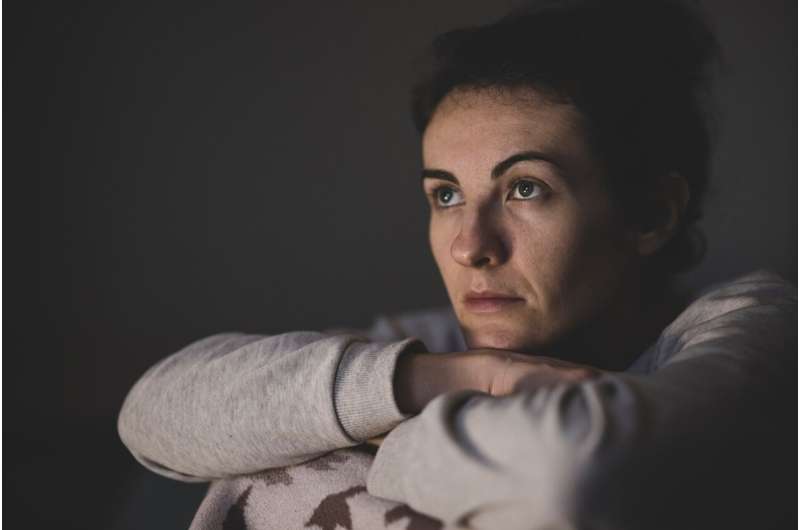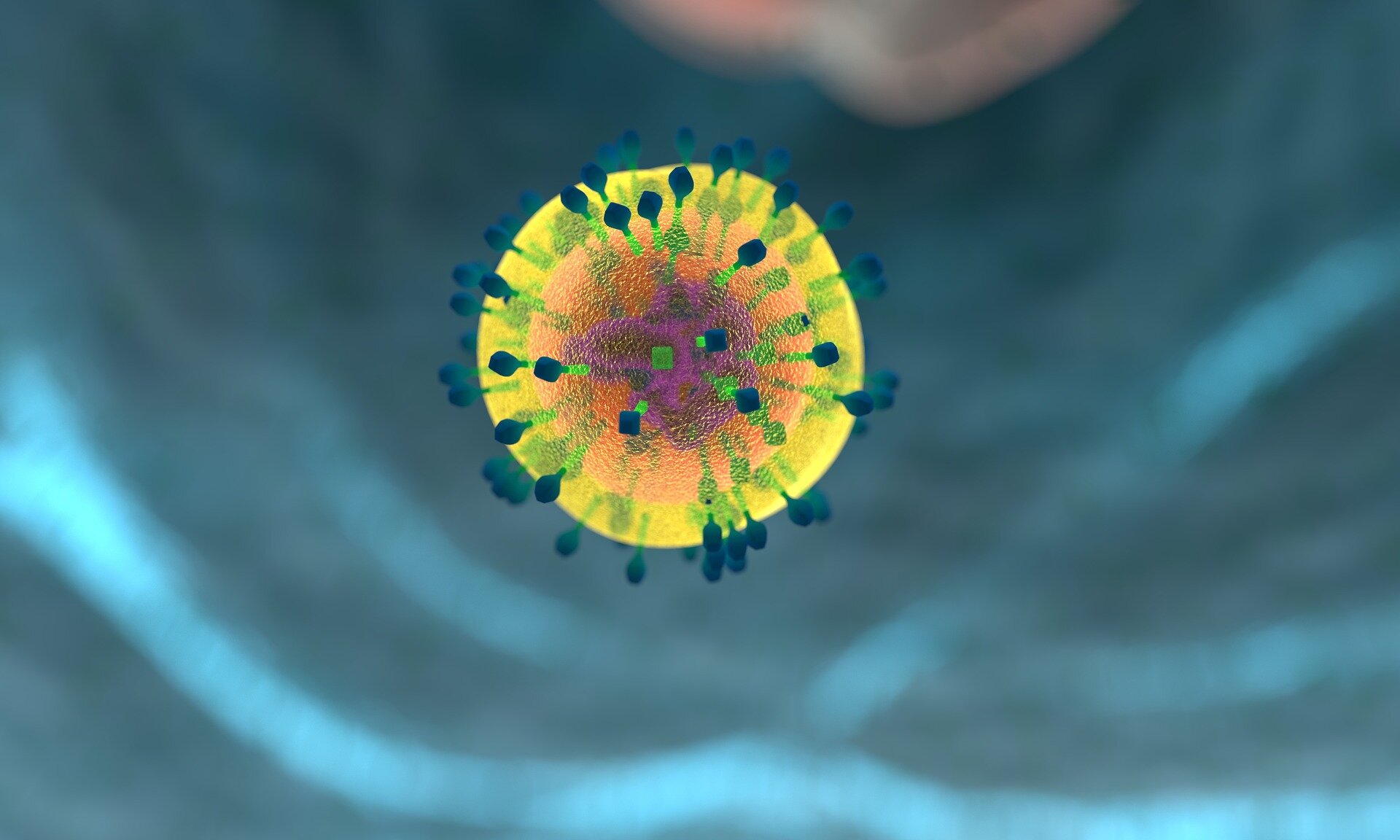
In a medical trial performed by Stanford Medication investigators and their colleagues, a 15-day course of Paxlovid—an antiviral drug mixture concentrating on SARS-CoV-2, the virus that causes COVID-19—proved secure as an extended-duration therapy however did not reduce choose signs of the syndrome generally known as lengthy COVID: the persistence, or reappearance, of COVID-related signs three months or extra after an preliminary COVID-19 an infection.
The findings are described in a paper revealed June 7 in JAMA Inside Medication.
Paxlovid is a extremely efficient antiviral agent licensed for therapy of acute COVID-19. It is authorized by the Meals and Drug Administration for the therapy of adults who’re newly contaminated with SARS-CoV-2, have gentle or reasonable COVID signs, and are at excessive threat of problems due to age or varied predisposing circumstances. A five-day Paxlovid routine has been proven to scale back recipients’ probability of hospitalization and loss of life by greater than 85%.
Whereas the Stanford trial didn’t present that Paxlovid lowered lengthy COVID signs, it did present that taking the drug for greater than two weeks was secure.
“We have demonstrated the general security of a 15-day course of Paxlovid—that is 3 times so long as it is being taken for acute COVID,” stated Linda Geng, MD, Ph.D., medical affiliate professor of major care and inhabitants well being, who was one of many trial’s two co-principal investigators.
Geng is the paper’s lead creator. Its senior creator is the trial’s different co-principal investigator, Upinder Singh, MD, professor and chief of infectious illness and geographic medication and of microbiology and immunology.
Determined folks
“Whereas there at the moment are improved therapies and therapy practices for acute COVID, there’s nothing FDA-approved for lengthy COVID, folks proceed to endure and the numbers preserve piling up,” Geng stated.
An estimated 10% to twenty% of SARS-CoV-2-infected folks—tens of thousands and thousands in america alone—develop lengthy COVID. That estimate is fuzzy, as a result of the definition of lengthy COVID is ambiguous. Greater than 200 separate signs have been ascribed to the syndrome. These signs are sometimes shared by different circumstances, making a definitive analysis laborious to pin down.
It might be that lengthy COVID is a set of various illnesses set in movement by acute COVID however with totally different underlying mechanisms and results and accordingly distinct strategies required to alleviate them.
Certainly, quite a few causes of lengthy COVID have been posited. Amongst them are virus-induced adjustments in our resident intestine micro organism; residual inflammatory overdrive; COVID-spurred autoimmunity; and the reawakening of different infectious viruses which have woven themselves into our genomes and remained dormant, solely to emerge when our SARS-CoV-2-preoccupied or exhausted immune methods let their guard down.
The randomized, managed, double-blind Part II trial, generally known as STOP-PASC, is the primary such take a look at of Paxlovid therapy for lengthy COVID. (STOP stands for Selective Trial of Paxlovid. PASC is an acronym for Put up-Acute Sequelae of COVID, medical scientists’ formal title for lengthy COVID.)
The trial was designed to discover the so-called viral-reservoir speculation of lengthy COVID: the chance that whereas preliminary signs could have abated and measured viral counts gone to zero, the virus or viral particles persists in deep tissues, hiding out and maybe replicating slowly there.
“Some research counsel that viral particles and molecular particles might be accountable for some long-COVID victims’ ongoing signs,” Singh stated. “We figured if that is the case, possibly treating them with Paxlovid might relieve a few of these signs.”
There are anecdotal stories of Paxlovid offering aid for long-COVID signs. “We have noticed long-COVID sufferers who’ve improved after taking Paxlovid for brand new infections,” stated Geng, who co-directs Stanford’s long-COVID clinic.
The trial
Between November 2022 and September 2023, Geng, Singh and their colleagues enrolled and adopted 155 trial contributors who’d examined constructive for SARS-CoV-2. All however two had been vaccinated. Demographically, they broadly mirrored the San Francisco Bay Space’s ethnic distribution. Their median age was 43; about two-thirds have been between 34 and 54 years previous.
On common, contributors had been initially contaminated greater than 16 months earlier than enrolling within the trial. But, every participant reported reasonable to extreme circumstances of at the very least two out of six frequent “core” long-COVID signs: fatigue, mind fog, shortness of breath, physique aches, and cardiovascular or gastrointestinal signs.
Half of the examine contributors have been randomized to a 15-day course of Paxlovid; the others obtained a placebo together with low dosages of one of many two separate medication that, mixed, represent Paxlovid. Each of those medication are antiviral brokers, however solely one of many two, nirmatrelvir, has been discovered efficient towards SARS-CoV-2. The opposite drug, ritonavir, has no direct efficacy towards this virus, but it surely ties up a number of the similar liver-resident enzymes that break down nirmatrelvir, boosting nirmatrelvir’s efficient focus within the physique.
As a result of ritonavir may cause an simply acknowledged aspect impact—a metallic style within the mouth—the investigators added it to the placebo formulation so placebo recipients would not be capable to distinguish it from the energetic drug, and vice versa.
Partway by way of the examine, the info was submitted to an unbiased group for preliminary evaluation. On figuring out that security appeared to pose no downside however no profit was but evident, the researchers continued the trial however stopped recruiting new contributors.
At 10 weeks, the prespecified time level for the ultimate comparability, there was no statistically important distinction between the 2 teams within the examine’s major endpoint: a discount within the severity of the six core signs. Nor was there any detectable divergence between the 2 teams in quite a few secondary outcomes resembling seated and standing blood strain and coronary heart charges, and efficiency on the one-minute “sit and stand” take a look at (topics are requested to sit down in a chair, get up and sit down once more repeatedly as quick as they will for a minute).
The 15-day drug routine was, nonetheless, secure. There was one critical, probably trial-related antagonistic occasion (hepatitis) among the many placebo recipients, whereas the three circumstances of significant antagonistic occasions skilled by Paxlovid recipients (blood loss anemia, forearm fracture and melanoma) have been judged to be unrelated to the drug therapy.
“One affordable implication of our outcomes is that Paxlovid will be given safely for an extended time frame,” Singh stated, “for instance, in cases the place a newly contaminated affected person is immunocompromised.”
The problem of being first
The obvious absence of a medical response within the current trial would not rule out the chance that Paxlovid could be discovered to scale back long-COVID signs in some folks, Singh stated, remarking that too many questions stay unanswered: “Ought to we’ve got examined sufferers with signs current after solely seven or eight months as an alternative of 16 or 17? Ought to we’ve got handled them for an extended time? Have been we even testing the appropriate sufferers? Perhaps just some signs might be conscious of antiviral therapy.”
If lengthy COVID will not be a single entity, the required therapy might differ amongst folks exhibiting totally different clusters of signs.
Even routine testing of contributors for the preliminary or post-treatment presence of cryptic SARS-CoV-2—which by definition can be tucked away out of attain of the immune system and, maybe, easy blood assessments—was a nonstarter, Singh stated, as a result of easy, noninvasive, low-cost assessments are nonexistent.
Intriguingly, on common, each the intervention- in addition to placebo-arm contributors’ general signs improved over the course of the examine. That might be excellent news, indicating that long-COVID signs usually subside with time.
However, there’s the potential for a placebo impact: The additional consideration and concern from nurses, docs and different health-provider varieties, in addition to the hope of aid from the drug, could nudge placebo recipients to sense subjective enchancment—and even to expertise goal enchancment—of their situation.
Plus, the absence of validated goal biomarkers made it powerful to inform if one particular person’s reported enchancment was larger than one other particular person’s.
Outcomes from plenty of chemical assessments, immunological assessments and wearables measurements taken all through the trial could assist the Stanford Medication group discover out whether or not some folks benefited significantly greater than others from Paxlovid and, in that case, how they could be distinguished upfront of therapy or enrollment in a brand new trial.
“We hope to report on our analyses of those measurements in 4 to 6 months,” Singh stated. The outcomes could inform different medical trials, now underway or in planning levels, of Paxlovid and different medication’ capability to counter long-COVID signs. These trials are sponsored by the Nationwide Institutes of Well being in addition to by Pfizer, Inc., Paxlovid’s developer, producer and marketer.
Researchers from Kaiser Permanente North California and Pfizer contributed to the work.
Extra data:
Linda Geng et al, JAMA Inside Medication (2024). DOI: 10.1001/jamainternmed.2024.2007
Stanford College Medical Middle
Quotation:
Medical trial exhibits 15-day Paxlovid routine secure however provides no clear profit for lengthy COVID (2024, June 7)
retrieved 7 June 2024
from
This doc is topic to copyright. Aside from any truthful dealing for the aim of personal examine or analysis, no
half could also be reproduced with out the written permission. The content material is offered for data functions solely.







